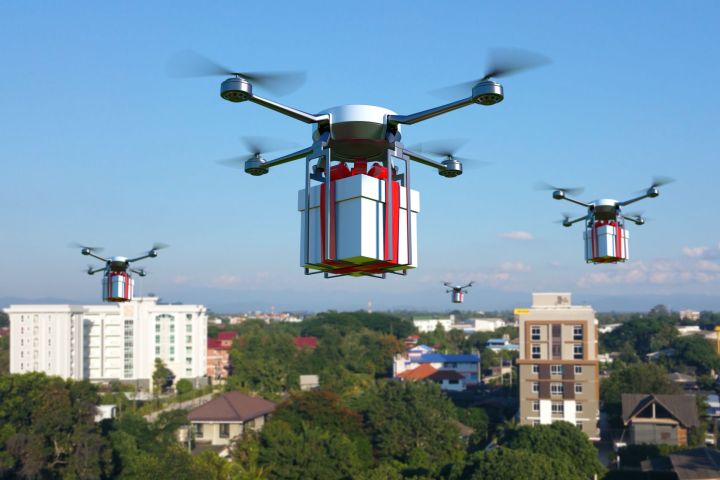
While advancements in drone technology have clearly been both fast and impressive in recent years, the key component required to make drone delivery a reality is still under development.
We’re talking about an air traffic control system for drones.
Google parent company Alphabet has been investing heavily in the development of not only its own Project Wing drone, but also a traffic management solution that could one day satisfy the Federal Aviation Administration (FAA), the body that regulates U.S. airspace. At the current time, drones have to be flown within the pilot’s line of sight, which isn’t much use to companies keen on delivering goods over long distances using the technology.
James Ryan Burgess, co-lead of Project Wing, revealed on Wednesday that his team is making good progress with the developments of its traffic management solution, with several years of work culminating in successful tests just a few days ago.
Thousands of drones in the air at once
In a post describing Wing’s work, Burgess says that within just “a few years,” lots of companies are likely to have “thousands” of drones in the air at any one time, “so we’ll need systems that can dynamically route UAS (unmanned aircraft systems) not only around each other, but around manned aircraft, buildings, terrain, weather patterns, and special events.”
Wing’s most recent test of its traffic management platform took place on Tuesday at an FAA test site at Virginia Tech, which, incidentally, is where the team recently trialed drone deliveries of burritos for hungry students. Its latest test demonstrated that its air management platform can manage multiple drones operated by different organisations, flying complex routes throughout a single location.
Besides three Wing aircraft, the test also included two flying machines from Intel, and one from DJI. Importantly, the exercise showed how a single operator can fly multiple aircraft simultaneously. In other words, a fleet of drones can fly autonomously to and from their various destinations using the traffic management platform, with the operator back at base monitoring their progress.
To improve its platform, Wing is currently focusing on three main areas: Real-time route planning for drones flying in the same area; alerts that inform operators of any unexpected changes in a drone’s route; and notifications that prompt operators to avoid FAA-designated no-fly zones at short notice, for example in the event of a wildfire.
In his post, Burgess pointed out that Wing is utilizing Google’s vast amount of mapping data — think Maps, Street View, and Earth — to build its platform and improve the safety of autonomous drone flight.
The Project Wing team will carry on refining its system to enable it to deal with even busier skies and more challenging physical environments.
“We’re continuing to work hard to make UAS delivery a reality, transporting goods through the sky in a way that’s inexpensive, fast, and environmentally sensitive,” Burgess said.
Wing isn’t the only one working on such a platform, but thanks to further development and collaboration we’re clearly moving toward a time when the technology will provide a viable option for companies keen to move goods through the skies, or use autonomous aircraft for other commercial purposes.


